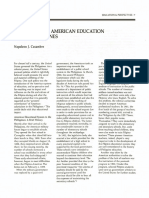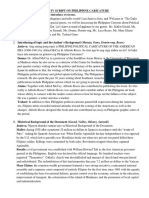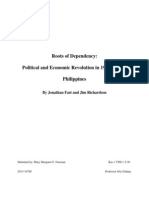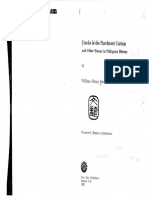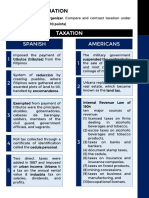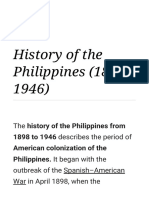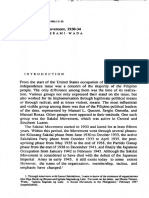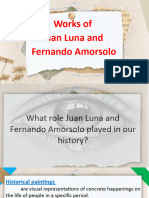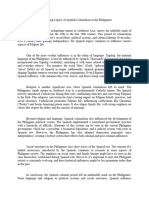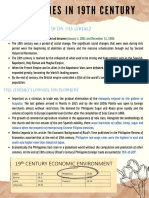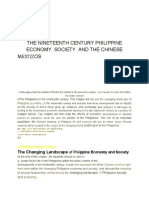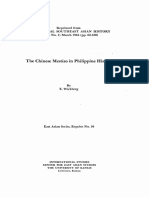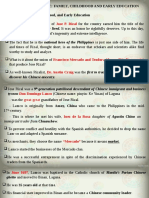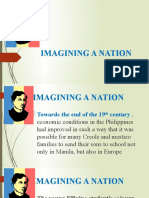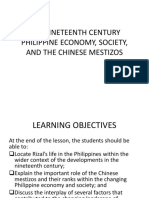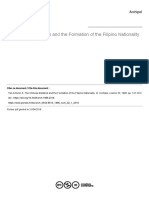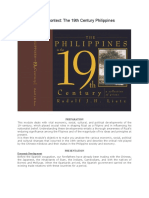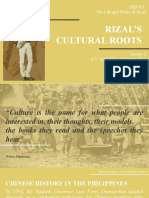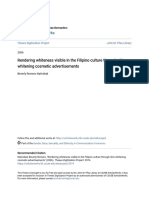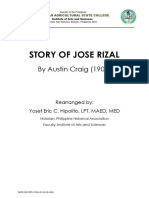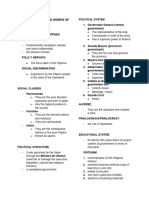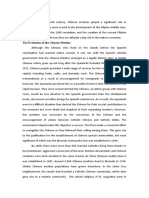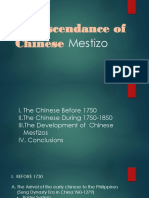Roots of Dependency
3 Ethnic Trade Patterns
- late 1830s: regular trade patterns were established in Manila
- Friction between the Spanish and foreign firms increased; Spanish hostility
towards merchant houses grew.
- Spanish officials slowed the rate of foreign capital penetration. ex. refusal to
open Philippine ports other than Manila = products of other islands had to be
transferred first to Manila = raised costs and affected commercial development of
Visayas and Bicol region
- 1841: Spanish commercial policy was reviewed again when world trade stagnated.
Spanish efforts to control trade and restrict foreign capital retarted the
commercial development in PH.
Spanish colony of Cuba's value of trade 5x greater than that of PH despite
Cuba's population 1/4 only of PH.
Recommendations: open additional ports to foreign trade and remove restraints
on immigrant labor.
- Lack of capital investment was retarding to commercial development and sugar
production on Luzon.
- Sugar production was backwards. Everything was produced in small quantities + no
technical skills + primitive machinery = uncertain grade, costly, poor quality
- Spain's weakness as commercial power to liberalize commercial practices =
strengthened Anglo-American interests
- The report's recommendations not accepted, further restrictions placed on
Europeans and Chinese economic activity = preserved Malay character of the
population; created a vacuum of indigenous ruling class
- Chinese returned to middleman trading role, link between Western merchants and
Chinese-mestizo landowners
- early 17th century: trade links with Manila attracted Chinese immigrants;
estimated 20,000 Chinese residents engaged in retail trade in Manila
- Chinese economic penetration + Spanish inability to Hispanize the Chinese and
convert them to Catholicism = recurrent violence (ex. anti-Chinese pogrom in 1603
and other massacres to reduce their population)
- 1680s: 15-20% of the Chinese population in Manila were converted to Catholicism
- mid-18th century: Christian Chinese were living in the Central Luzon provinces,
Ilocos, Iloilo, Cebu, Zamboanga
- 1830s: the Spanish reconsidered their policy of Chinese exclusion. Immigration
from China allowed and encouraged.
- Few Chinese worked for long as agricultural laborers as the Spanish wanted; new
immigrants settled in Manila/worked in the provincial retail trade
- The Chinese developed into important allies of the British and American
merchants; while the Chinese-mestizos became bootlickers to Spain.
- The British were instrumental in developing commercial ties with Chinese who
�acted as agents in rural areas.
- Cabecilla system - a wholeselling network established by Chinese merchants in
provinces to retaik Western hardware and other merchandise, and to act as buyers of
local crops for the Europeans.
Export crops were delivered to the merchant houses by the Chinese.
Merchant houses controlled the pricing mechanism.
Actual collection and distribution done by the Chinese. The problem of
hostile attitude of Spain to Western merchants alleviated.
System was established in Luzon, Iloilo, and Cebu when merchant houses were
built in these areas.
- Upsurge of Chinese influence after 1850 caused distrust by Spaniards, mestizos,
and Indios.
- 1890s: government resumed practice of restraining Chinese economic activity
- The Chinese sought mutual protection from these difficulties by being culturally
and politically isolated from the mainstream of Philippine lie.
- Arrival of early Chinese immigrants without wives -> Chinese-Indio marriages ->
development of Chinese-mestizo sub-group
- Chinese-Indio relations encouraged by the Spanish who believes the development of
a Catholic mestizo sub-group would help the Church penetrate China.
- Mestizo populations developed in the most Westernized areas of PH, which were
centers of Spanish and Chinese population (Manila, neighboring provinces of Bulacan
and Pampanga) + special advantages and opportunities not available to Indios and
Chinese provided by Spanish = mestizo cultural distinctiveness
- Chinese-mestizos became the most Hispanized.
- Early mestizo occupations: wholesaling, retailing, and landholding. Mestizos
became lessees on friar estates.
- Mestizos competed against the Chinese in wholesale and retail trade. Reduction of
Chinese population = mestizos captured these occupations + replaced the Chinese in
many artisan occupations in Manila (printing trade, carriage-making, masonry,
carpentry, and tailoring)
- Re-introduction of Chinese immigrants after 1850: Chinese captured wholesale and
retail trade again.
- Commercial agriculture production became the special province of the mestizos.
- The Chinese mestizos maintained their Hispanic distinctiveness and became
involved in profitable sugar trade as primary producers.
- As they grew wealthy, they developed anti-Indio and anti-Chinese sentiments. They
had churches built. it became common for mestizo hacienderos to affix the Spanish
honorific title "Don" to their names.
- More petty restrictions by the Spanish to harass merchant houses and contain
their growing influence only allowed Chinese and mestizo-sub groups to have tighter
control over internal retail trade and rural lines of credit. Usurious loan
practices (common in later 19th-20th century Philippine agrarian life) dated from
this period.
�- Economic class divisions (rather than racial/ethnic considerations): Chinese,
Spanish, Indio, and Mestizo.
- Ethnic Chinese were involved in trade but it was the Hispanized Chinese-mestizos
who focused on the actual prodution of export commodities.
- Rise of export agriculture = growing market dor Western manifactures in classic
imperialist manner
- Creation of demand for Western imports = reinforced the need to generate a
marketable agrarian suplus
- Barter economy replaced by money economy = those without access to money income
suffered (marginalization) *remains to this day
- Phil economy developed in this manner: dependent and geared for Western markets
and requirements.
- Spanish attempted to compete with the growing power of American and European
merchant houses but to no avail:
1. 1849: Spain tried to revive its commercial position. Established a sugar
monopoly in Negros, Visayas (good area for its climate and soil). Monopoly
franchise was given to a Franciscan order, but failed due to being
undercapitalized.
Negros - greatest sugar-producing area of the Philippines
2. 1852: Founding of Banco Espanol-Filipino and then Obras Pias. It became the
first official government bank in the Philippines and given the sole right to issue
bank notes. Spain hoped to recover part of trade in the PH.
- Development of Spanish competition in banking and finance didn't do much against
Anglo-American interests.
- For the rest of the century, US exports were below Britain's.
- The nature of sugar production (large capital inputs + labor-intensive planting
and harvesting + high level of production organization + cost of mill equipment,
transport, and warehousing) = dependence on Western commercial houses to finance





